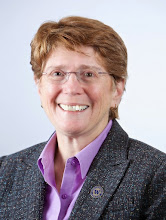In The Poisoner's Handbook, Deborah Blum tells the human and scientific stories of poison and investigation in the 1920s and 1930s, focusing on New York City and two crusading scientists: Charles Norris, the city's first medical examiner, and Alexander Gettler, the head chemist in the ME's office.
This work mixes a couple of nonfiction genres: true crime and popular science. A couple is found dead: accident or murder? Several family members die: all victims of disease or were they poisoned? It takes pretty sophisticated science to tell -- science that Norris and Gettler had to develop as they went along.
There's also some interesting social history. In addition to working on individual crimes, the scientists advocated (not always successfully) for public health measures -- workplace safety, a stronger FDA (able to ban, for instance, "medicines" with radium), and an end to Prohibition-era poisoning of alcohol (see Blum's account in Slate).
Deborah Blum, The Poisoner's Handbook: Murder and the Birth of Forensic Medicine in Jazz Age New York (HV6555.U62 N373 2010 at Good Reads). Publisher's page.


No comments:
Post a Comment